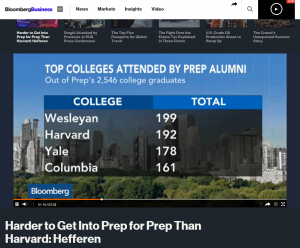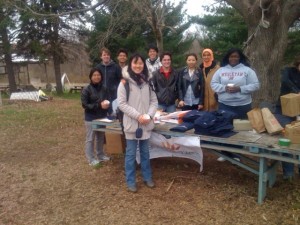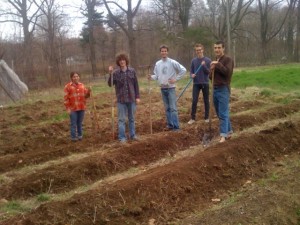We need to physically isolate from one another; that much is very clear in these uncertain times. And in uncertain, stressful times many of us crave connecting with one another. We crave a friend’s embrace, a colleague’s pat on the back, a warm introduction to someone we are eager to get to know. Stopping the spread of this virus is hard because we must stop doing some of those things that really enhance our lives. These things are core to why we believe a residential educational experience is so enriching. They are the things that our students are already missing as almost all of them depart from campus, often tearfully.
They will also miss the kinds of activities that offer deep learning through physical practice. I’m not just talking about sports (which folks already miss), but also about playing in the gamelan orchestra or raising one’s voice along with the Ebony Singers. We are working hard on finding virtual ways to provide learning experiences that usually come from physical practice – whether with instruments, lab equipment, bodies or voices – and we are excited about the prospects. I have been so impressed by (and grateful to) my colleagues on the faculty who are figuring out how to match online learning pedagogies to the content of the courses and their own pedagogical practices. Teachers and students will learn a lot about what can (and cannot) be done at a distance – and things to be grateful for (once taken for granted) when normal classes resume.
It’s only been about a week since we announced that Wesleyan would suspend normal operations, and already so much has happened. After the initial shock and disappointment, there followed daily examples of sacrifice, cooperation and mutual understanding. Our friends and colleagues across the University have been stepping up in a big way. The Student Life and Equity and Inclusion teams have gone so far beyond the call of duty as they support students from an extraordinary range of circumstances. Public Safety officers, Investment staff, and Bon Appetit workers, Physical Plant, Technology, Library and Advancement and Finance colleagues…so many have found ways to contribute to student well-being while also planning for the future. Communications folks are working overtime to keep all our constituencies informed, and HR is looking after the welfare of all our employees. Admission and Financial Aid staff members, on top of everything else, are crafting the class of 2024 and planning a virtual WesFest!
Wesleyan University has weathered crises before, and we have done so by coming together to support one another. We begin with our most vulnerable students. We will ensure that work-study funds and other forms of financial aid are distributed for the remainder of the semester, and we have raised significant monies for the Emergency Fund. There is an application process for this support, but it is simple and straightforward. We are already distributing money. And for those who can, it’s easy to make a donation! (Kari and I just did.)
I feel the sadness of those whose college experience has been so rudely interrupted. I see some of those students on Foss Hill (6 feet apart) early in the morning, catching a last sunrise over the Connecticut River. I see others getting a grab-and-go meal at Usdan, or having one more WesWings delight, before sorrowfully waving goodbye to friends. We’ll do our best to keep the students safe who must remain on campus. Seniors, we’ll figure out how to celebrate your accomplishments, whether as planned in May or, if need be, at some later date.
We’ll miss all who had to leave, but we’ll be ready to welcome students back when the threat of the pandemic recedes. What a joy that will be! Meanwhile, be safe and stay well!!






